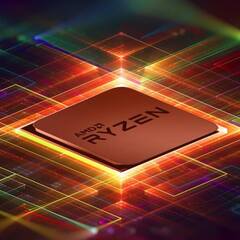SSD with and without DRAM difference? (and one other question)
It's 3D or Planar (2D) ... it has to do with how the memory cells are constructed on the silicon. Nowadays pretty much everyone makes 3D because they can put more cells on a die, so it's more profitable.
Just like they don't say Samsung 980 has a SLC cache, they just default to saying TLC because whether it's planar or 3d has very little relevance and importance to a consumer.
It's a detail that's not important, like you don't care if your DDR4 stick has chips that store the bits in a 8 bits x 512 M arrangement or as 16 bits x 256 M inside the chip... or you don't particularly look to determine if the stick is Single Rank or Dual Rank DDR4 - it's DDR4 and that's all you care about.
You're seriously overthinking this ... good for you for asking so many technical stuff, you'll learn something, I hope ... just don't stress yourself too much with these choices.

















Create an account or sign in to comment
You need to be a member in order to leave a comment
Create an account
Sign up for a new account in our community. It's easy!
Register a new accountSign in
Already have an account? Sign in here.
Sign In Now